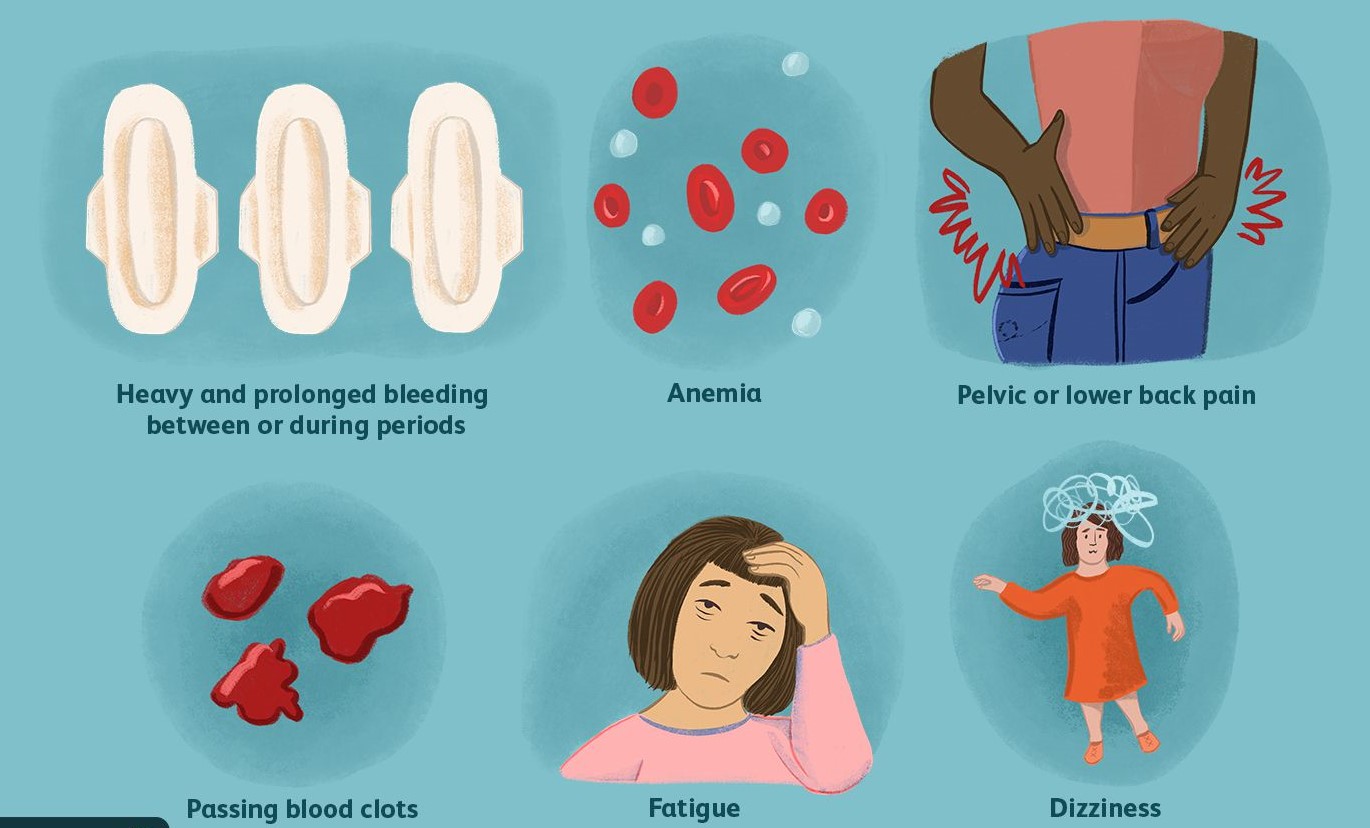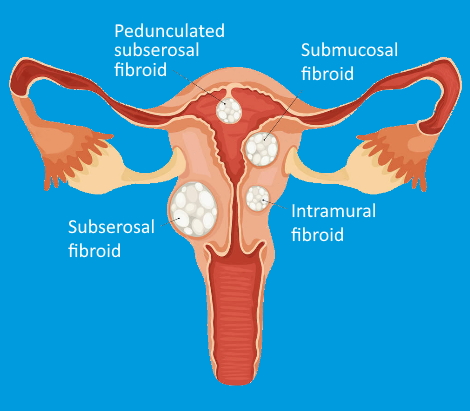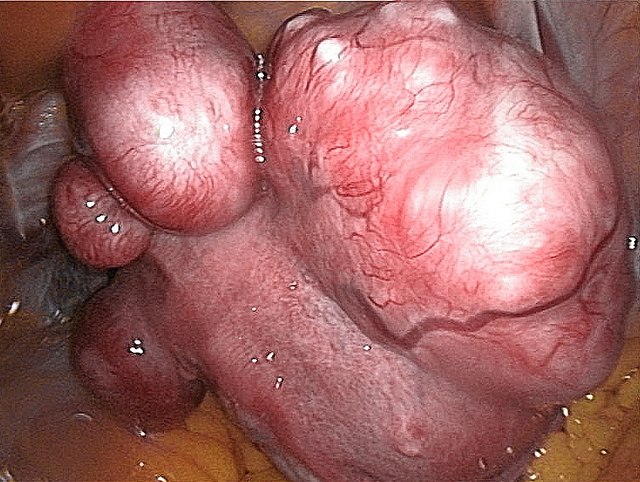For over 10 years before seeking a permanent solution, Mary Peters struggled with fibroids in tears and agony.
Life was hell for the Rivers State indigene every month, owing to the severe pelvic pain and heavy bleeding that impacted her health negatively.
Mary said that menstruating every month was traumatic, as she usually suffered anaemia thereafter.
The digital marketer, who is in her late 30s, said while some women with fibroids get pregnant and go on to have healthy babies, her experience was the opposite as she ended up having a miscarriage.
Mary said in 2017, she had a close shave with death when she lost her five-month pregnancy, which later led to complications that almost took her life.

What is fibroid?
According to the American College of Obstetricians and Gynaecologists, fibroids are benign (not cancerous) growths that develop from the muscle tissue of the uterus.
ACOG says the size, shape, and location of fibroids can vary greatly, adding, “They may be inside the uterus, on its outer surface or within its wall, or attached to it by a stem-like structure. A woman may have only one fibroid or many of varying sizes.
“Fibroids may have the following symptoms: changes in menstruation, heavy menstrual periods, menstrual pain, difficulty urinating or frequent urination, constipation, miscarriages, infertility, etc,” the ACOG said.
 Herbal treatment worsens fibroid
Herbal treatment worsens fibroid
Mary said fibroids made life difficult for her until she eventually got it removed without surgery. That was well after she had taken different types of herbs and concoctions that worsened her condition.
“I battled with fibroids for 10 years. I was diagnosed with it in 2010 but was taking herbal treatment that made the fibroids grow bigger. It was traumatic and I lived with excruciating pain.
“I bled heavily and passed out blood clots like someone giving birth. Five days in a month, which was the duration of my menstruation, I went about with a bag of pads and would always be conscious of myself to avoid getting stained.
“I barely sat for long. When I went to ease myself, the moment I bended down, the blood clots would start popping out like tiny balls.
“I was anaemic, suffered from headaches, lower back pain and dizziness. There were days I was unable to go to work because of heavy flow. The bleeding was really scary and impacted my well-being negatively.

Unforgettable miscarriage
Recalling how she lost her five-month-old pregnancy in 2017, Mary said, “When my stomach was getting bigger, I thought the pregnancy would stay and that there was nothing to worry about.
“But I started having persistent pain in my abdomen and thighs until I lost the pregnancy. It was a bit complicated for me because I thought I will never be able to get pregnant in the first place.
“My fiancé later broke up with me because he felt I was going to be a liability to him. That affected my quality of life. I went through years of trauma and pain because I was afraid of going for surgery.
“I developed cold feet about going for surgery after one woman that lived in my neighbourhood died after fibroid surgery.
“The neighbour had decided to do the surgery to increase her chances of getting pregnant. She was told by a doctor that unless the fibroid was removed, she will not be able to get pregnant. Hers was very big and she looked heavily pregnant. She eventually died during the operation and I vowed not to go under the knife.”
It was this fear of surgery that forced her into taking herbal treatment, which only compounded her problem.
“Instead of shrinking, it grew bigger and gave me more problems. Meanwhile, my doctor had repeatedly told me to have it removed through surgery, but I refused,” Mary narrated.

Fibroid removal without surgery
“So, I kept on looking for a solution that will be without surgery until I stumbled on reports online about alternative procedures that can be used to remove fibroids.
“I read about women that have undergone fibroid removal without surgery through a non-invasive process known as the High-Intensity Focused Ultrasound (HIFU). I went for the procedure in 2021 and it lasted for less than 90 minutes.
“When the procedure was over, I realised that the ‘breathing’ sensation in my stomach had stopped automatically. When someone has fibroid, it will be breathing like a human being. I had to put my hand on my stomach for 20 minutes after the procedure to be sure it was gone. ”
For Mary, life has since become beautiful as she no longer experiences heavy blood flow and pelvic pains.
“My menses is normal and comes with ease, unlike the torture I went through. So, women battling fibroids and are afraid of going under the knife should seek help from experts. They can have it removed without surgery and still have their womb intact,” she said.

Fibroids curable
Given the pain, trauma and infertility caused by fibroids among women in their reproductive age, it is worthy of note that the condition is curable without surgery, experts say.
Maternal health experts say HIFU is a bloodless or non-invasive surgery for the treatment of fibroids and adenomyosis. The procedure involves using real-time ultrasound and high-intensity ultrasound waves to generate localised heat to specifically target individual fibroids and destroy the cells.
A fertility expert and Managing Director of Nordica Fertility Centre, Lagos, Dr. Abayomi Ajayi, says fibroids are among the most common malignant growths in women of reproductive age.
He pointed out that women might have fibroid before the age of 50, lamenting that it impacts the quality of life.
The gynaecologist noted that fibroid could also be associated with infertility for a long time because of the fear factor associated with surgery.
Dr. Ajayi affirmed that HIFU is a safe method of removing fibroids without surgery and that removal of the growth improves the chances of conception.
“HIFU is about safe care. We are not saying that HIFU is the only way to treat fibroid but it is a method that is safe.
“If well trained, a single surgeon can do up to 200 fibroid removals in a year. There is no need for anaesthesia or hospital admission because it is a day procedure.
“The process is so easy; all the patient does is lie down for about an hour and a half to two hours and the procedure is over. The person is then observed for about two hours after which she is free to go home.
“By the next day, the person can eat anything and 48 hours afterwards, do anything. The convenience to the patient and physician is huge. There is no blood transfusion. Even on the day of the procedure, the doctor doesn’t need to touch the patient. All he does is just use software, and it is wonderful”, he explained.


